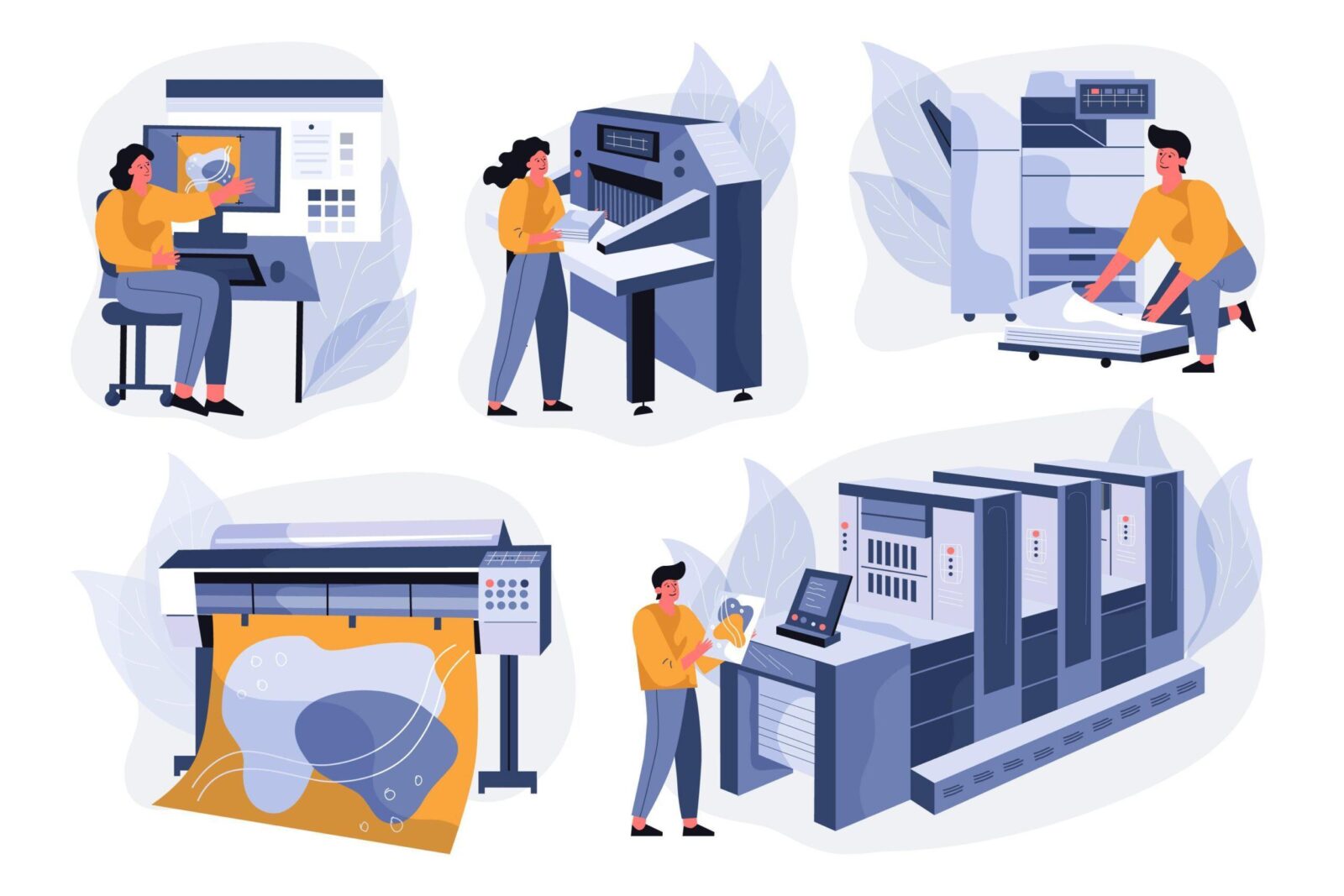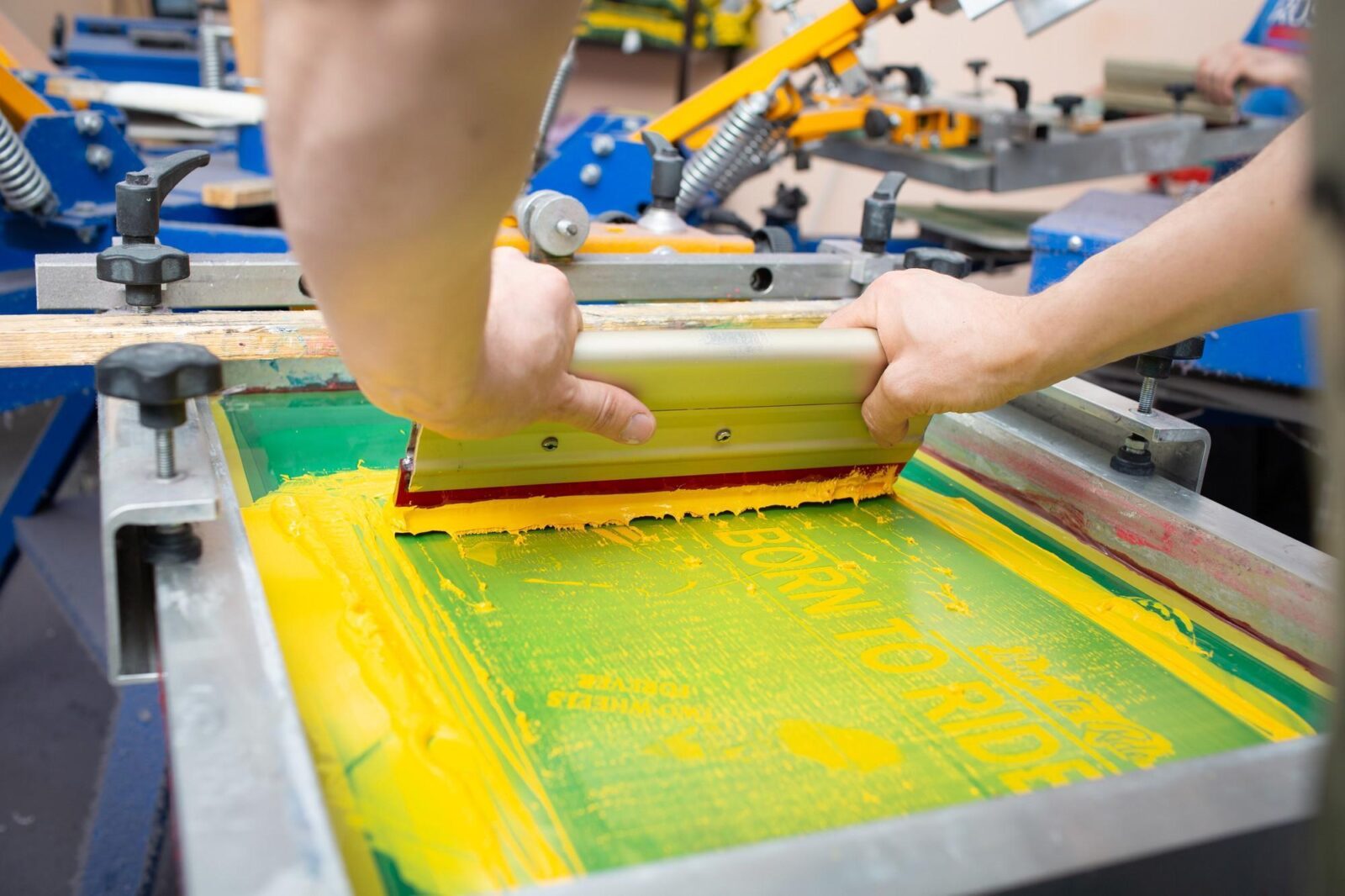![]()
Printing Options
![]()

Offset Printing
This printing technique is called ‘offset’ because it does not transfer ink directly onto paper like other printing methods do. Instead of going from plate to paper in two steps, ink is transferred first to a rubber cylinder and then printed on paper.

Digital Printing
Digital printing is the process of printing digital-based images directly onto a variety of media substrates. There is no need for a printing plate, unlike with offset printing. Digital files such as PDFs or desktop publishing files can be sent directly to the digital printing press to print on paper, photo paper, canvas, fabric, synthetics, cardstock and other substrates.

Screen Printing
Screen printing is the process that involves transferring a stenciled design on a flat surface with ink, a mesh screen, and a squeegee. Although paper and fabric are the most typical of surfaces that are used in screen printing, it is also possible to print onto metal, plastic, glass, and wood.

Foil Stamping
Foil stamping is the application of pigment or metallic foil, often gold or silver, to paper where a heated die is stamped onto the foil, making it adhere to the surface leaving the design of the die on the paper. It can be combined with embossing to create a more striking 3D image.

Embossing
Embossing is an artistic technique that creates a pattern on a material such as paper, metal, fabric, leather, or wood. The pattern can be raised or in relief, depending on how it is embossed. Embossing involves the creation of an impression by placing the dies in contact with the stock under high pressure.

Debossing
Debossing is the reverse of embossing. An image such as a logo, a title, or other design is heat-pressed into the surface of the paper with a heated die, creating depressions rather than raised impressions as in embossing.
